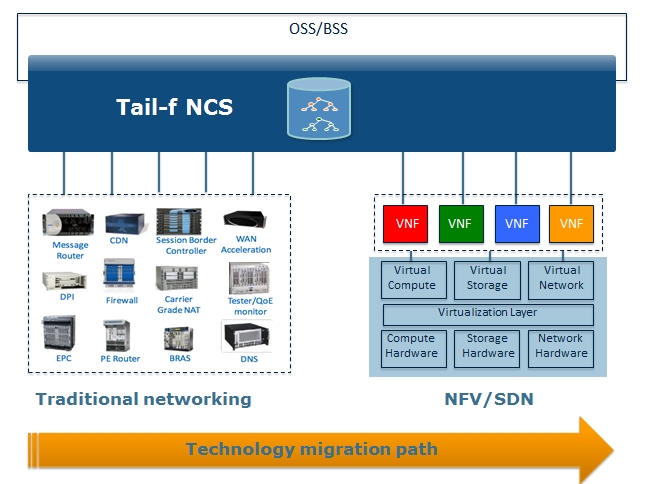NFV Evolution: Defining the Missing Link
In the ETSI architecture, the interface between element management systems (EMSs) and virtualized network functions (VNFs) is classified as out of scope by ETSI, with the expectation that NFV vendors will supply this interface. ETSI’s framework does not address the management and orchestration of the actual VNFs being deployed on that infrastructure (beyond starting and stopping VNFs). The various VNFs are controlled by closed and static vendor-specific EMSs that do not support automation. The following problems arise:
- EMS sprawl: no single console to the VNFs, learning curve for various EMS systems, no automation, OPEX/CAPEX cost of EMS
- Amplification of existing bottlenecks: assuming closed EMS systems in place, manual work and OSS integration efforts will increase since the requirements for dynamic services are increasing with NFV.
- Orchestration sprawl (on the north side): automation requirements ripples to the orchestrator on the top which will be a very complex integration task.
What is required is a network service orchestration system providing a service-oriented northbound API based on data models and transactions. This removes the need for EMSs and it provides automated real-time service provisioning.
Service orchestration
Network Control System (NCS) from Tail-f Systems is one of the products available today that addresses these issues. NCS is a software solution for provisioning multi-vendor services and configuring network devices in a virtualized network environment. As you can see in figure 3, NCS functions as a service orchestration system between network functions and the BSS.

Source: Tail-f Systems
Currently, vendors take different approaches to service orchestration. Single-vendor solutions typically focus on making their existing physical solutions work with NFV. NCS accommodates multi-vendor service provisioning and offers a clear path from existing networks. This is the key to accelerating new service delivery, as it accommodates the way networks and service provider organizations exist today, in addition to what they may look like in the future.


















